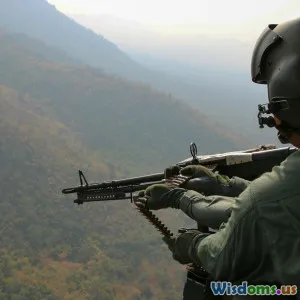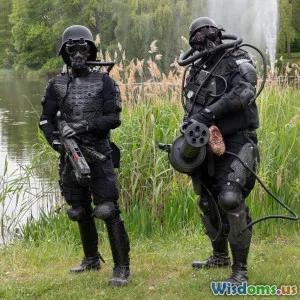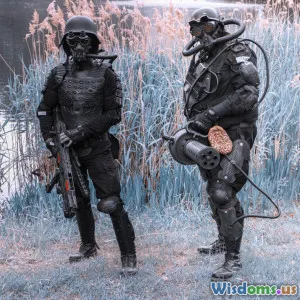
The Evolution of Warfare Strategies
6 min read Explore the transformation of warfare strategies through history and the impact of military technology on future conflicts. (0 Reviews)
The Evolution of Warfare Strategies
Warfare has been a crucial part of human history, evolving from primitive tribal skirmishes to complex geopolitical conflicts. This evolution has been significantly influenced by advancements in military technology. In this article, we will explore how strategies in warfare have changed over time and what the future of military conflict may hold.
Early Warfare: The Rise of Strategy
The earliest forms of warfare can be traced back to prehistoric times when early humans engaged in skirmishes over resources. These conflicts were largely unorganized and driven by necessity. As societies became more structured, so did their warfare strategies.
Ancient Civilizations and Strategy
With the rise of ancient civilizations like the Egyptians, Greeks, and Romans, warfare began to incorporate more sophisticated strategies. The Greeks, for example, introduced the concept of phalanx formations, allowing them to engage larger enemy forces effectively. The Romans expanded on this with their legions, emphasizing discipline and cohesive tactics.
The Middle Ages: Chivalry and Gunpowder
The Middle Ages saw the emergence of chivalric codes and the knightly class. Warfare during this period often revolved around large-scale battles and sieges. However, the invention of gunpowder in the 9th century began to shift the balance of power.
The Impact of Gunpowder
Gunpowder allowed for the creation of cannons and firearms, which drastically changed how battles were fought. The introduction of these technologies led to the decline of armored knights and fortified castles, marking the beginning of a new era in warfare.
The Industrial Revolution: Total War
The Industrial Revolution brought about unprecedented advancements in military technology, including railroads, steamships, and eventually, more sophisticated firearms. This era introduced the concept of 'total war' where entire nations mobilized for war, and civilian populations became targets.
Key Conflicts
The American Civil War and World War I showcased the devastating effects of industrialized warfare. The use of machine guns, tanks, and planes changed the battlefield dynamics, leading to unprecedented casualties and destruction.
The Cold War: Technology and Deterrence
Following World War II, the Cold War era was characterized by a standoff between superpowers, where the threat of nuclear warfare loomed large. Military strategies during this period focused on deterrence and the concept of mutually assured destruction (MAD).
Technological Advancements
The development of intercontinental ballistic missiles (ICBMs), spy satellites, and stealth technology revolutionized military tactics. The focus shifted from large-scale invasions to covert operations and intelligence warfare.
The 21st Century: Cyber Warfare and Drones
In the modern era, warfare strategies have continued to evolve, largely driven by technological advancements. The rise of the internet and cyber capabilities has opened new frontiers in warfare. Cyberattacks can cripple nations without a single shot being fired.
The Role of Drones
Drones have transformed military strategy by enabling precision strikes and surveillance. Unmanned aerial vehicles (UAVs) can conduct missions in hostile environments without risking human lives. This shift towards remote warfare raises ethical questions and challenges traditional notions of combat.
Future Warfare: Artificial Intelligence and Autonomous Systems
Looking ahead, the future of warfare is likely to be heavily influenced by artificial intelligence (AI) and autonomous systems. AI can analyze vast amounts of data to inform strategic decisions, while autonomous weapons systems may alter the landscape of combat entirely.
Ethical and Strategic Considerations
As we move toward increasingly automated warfare, the ethical implications of using AI in combat will become a pressing concern. Ensuring accountability in decisions made by autonomous systems will require careful consideration from military and political leaders alike.
Conclusion
The evolution of warfare strategies reflects humanity's ongoing struggle for power and security. As military technology continues to advance, the strategies employed in combat will undoubtedly transform. Understanding this evolution is crucial for anticipating the challenges and implications of future conflicts. As we stand on the brink of a new era in warfare, it is essential to navigate these changes with a keen awareness of their potential impact on global security and ethical considerations.
In summary, whether through the lens of history or looking toward the future, the world of military strategy is a dynamic field shaped by technology, ethics, and the ever-changing nature of conflict.
Rate the Post
User Reviews
Popular Posts




















